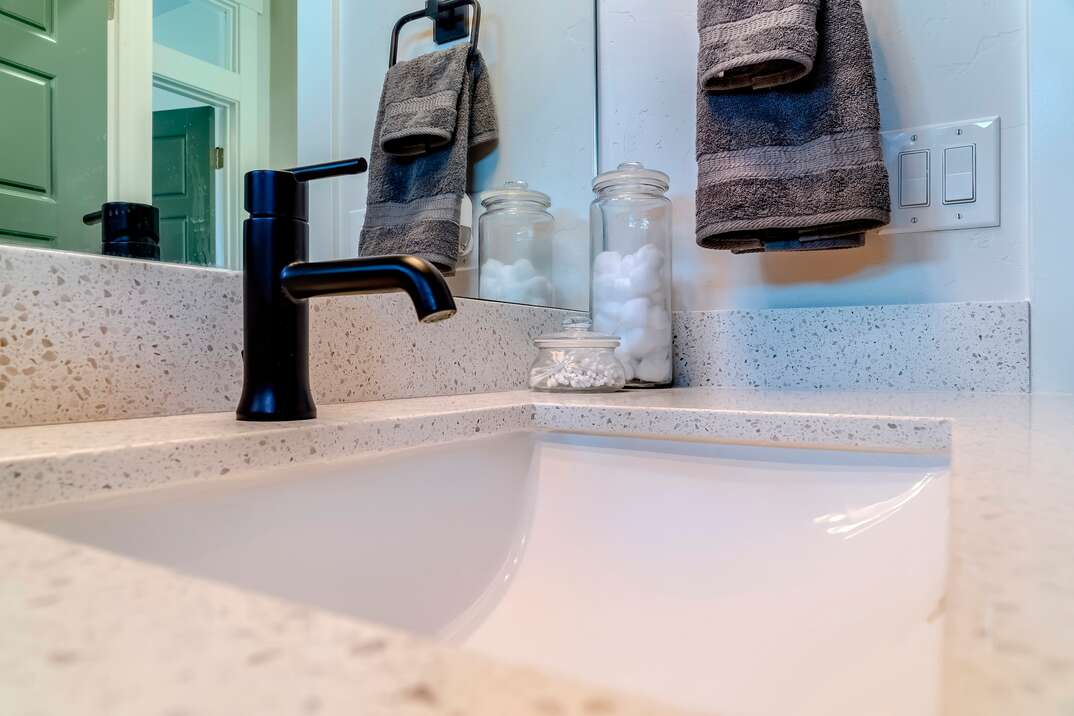How to Install an Undermount Sink

Is your kitchen sink outdated or boring? Maybe your bathroom needs a fresh look. Undermount sinks, including the popular farmhouse sinks, give your home a sleek, updated look and make it easy to wipe crumbs and other debris from your countertop right into your sink.
This May Also Interest You: How Much Is a Farmhouse Sink?
Proper undermount sink installation is essential to ensure the sink stays attached and doesn't leak. Learn how to install an undermount sink to improve the look of your kitchen or bathroom.
How Are Undermount Sinks Attached?
Undermount sinks are attached directly to the underside of the countertop. They work best with solid-surface countertops, such as granite or marble, because they need the strength for support. They can be attached with various methods, including a two-part epoxy, clips and brackets. If you use brackets, they have to be screwed into the countertop, which can cause cracking if you don't do the job correctly.
Do Undermount Sinks Need Clips?
Most undermount sinks come with clips to attach them to the underside of your countertop. However, you don't have to use clips for all undermount kitchen or bathroom sink installations. You can also use brackets or the two-part epoxy. You can also use a combination of attachment methods for a more secure hold.
Do You Install Undermount Sink Before Countertop?
Undermount sink installation requires you to attach the sink directly to the countertop. You can do this before or after you install the countertop. To do it before, flip over the countertop to make the attachment process easier. Leave the countertop upside down until the epoxy fully dries. Then, carefully flip over the countertop with the sink attached to install it.
If you already have the countertop installed, you can position the sink in the cabinet below the opening to install it. Have help raising it into position to secure it to the countertop. Use the clamp method to support it until the epoxy dries.
Steps for Undermount Sink Installation
Professional installation is often recommended for a precise finish. If you do decide to try your hand at it, have a helper handy. Here are the steps for installing an undermount sink:
- Cut a hole in the countertop for the sink. Some undermount sinks come with a template. If yours doesn't, you can flip the sink over onto the countertop where you want it and trace the sink. You'll want the hole about 1/2 inch smaller than what you trace to leave enough countertop to attach the sink.
- Apply the epoxy to the edges of the sink.
- Position the sink on the underside of the countertop, ensuring it's perfectly centered.
- Use the clips or brackets to attach the sink for additional support if using.
- Wipe away any epoxy or caulk that squishes out of the sink.
- Allow the epoxy to dry for at least 24 hours or for the amount of time specified in the manufacturer's instructions.
- If you installed the sink before attaching the countertop, flip the countertop over and install it on top of the cabinets.
- Attach the plumbing and accessories to complete the undermount sink installation.
More Related Articles:
- How to Install a Bathroom Sink: 5 Steps to a Restroom Refresh
- How Much Does It Cost to Replace a Bathroom Sink?
- Everything ‘Bout the Kitchen Sink: A 5-Step Installation Guide
- How Much Does It Cost to Install a Kitchen Sink?
- No Hogwash: How to Install a Farmhouse Sink in 9 Steps
How Do You Support an Undermount Sink?
In proper undermount sink installation with epoxy, clips and brackets, there's usually no need for additional support. The attachment methods should securely support the weight of the sink, both empty and with water and dishes in it.
To support the sink during installation while the epoxy dries, place a two-by-four across the countertop over the sink opening, using towels under the board on either end to protect your countertop. Place the end of a bar clamp through the sink's drain hole. Put a smaller board underneath the sink to protect it. Tighten the clamp onto the boards to hold the sink securely in place while the epoxy dries.
Types of Undermount Sinks
The sink goes underneath the countertop, but you have some flexibility in the reveal — how much of the sink rim you can see after it's installed. Here are three options:
- Zero reveal: The opening of the sink aligns exactly with the edge of the countertop.
- Negative reveal: In this installation method, you can't see any of the sink's rim. It's completely covered by your countertop with a little bit of the countertop overhanging the sink opening.
- Positive reveal: The opposite style is to cut the hole slightly larger than the sink opening to install the sink so a little bit of the rim shows. Ensure you don't cut the hole too large, or you won't have any way to attach the sink. This type can be difficult to clean because crumbs can get stuck on the sink rim.


